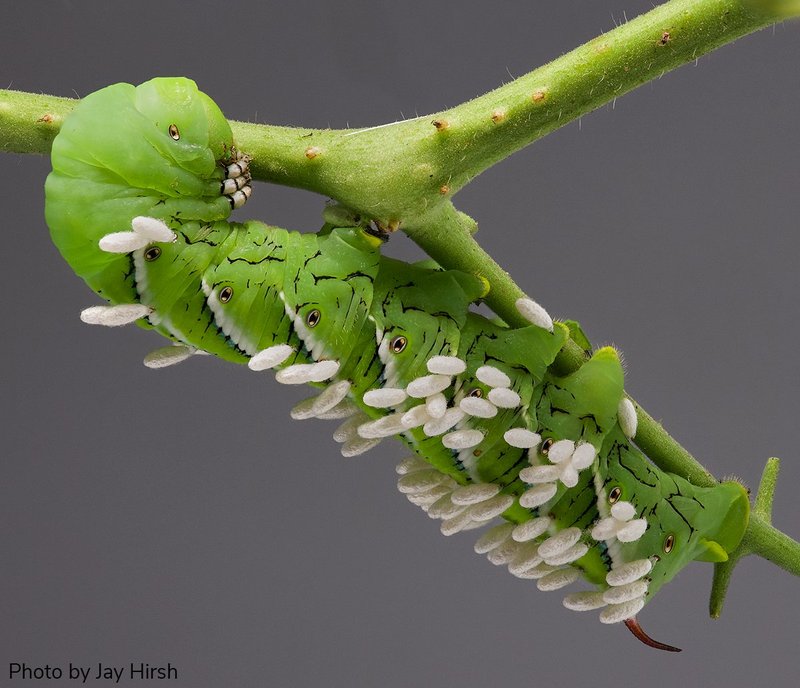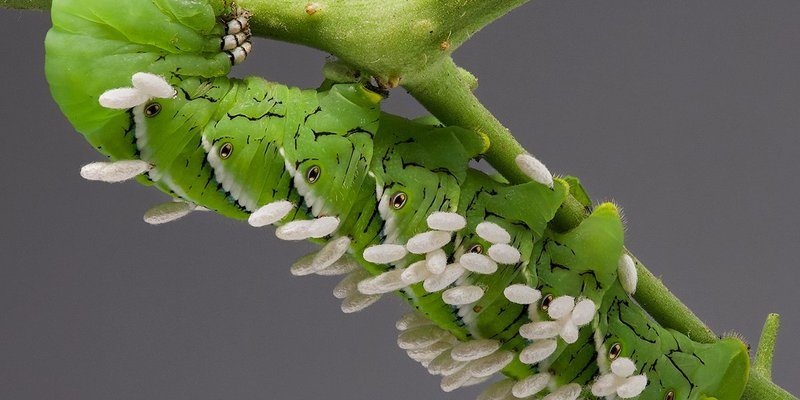
Imagine you’re in a bustling garden filled with vibrant plants, but lurking among them are hornworms, feasting away. This is like having a party crasher that just won’t leave. That’s where parasitic wasps come into play. These little wasps act like an efficient security system, targeting and controlling hornworm populations without the need for harmful pesticides. Isn’t that a great way to keep your garden healthy and thriving?
So, if you’ve ever found yourself battling hornworms and feel overwhelmed, don’t worry! Let’s dive into how parasitic wasps work and how they can help you reclaim your garden.
What Are Hornworms?
Before we talk about how parasitic wasps help, it’s important to understand what hornworms actually are. Hornworms are the larval stage of certain moths, specifically the tomato hornworm (Manduca quinquemaculata) and the tobacco hornworm (Manduca sexta). They’re notorious for their bright green color, which can make them blend in perfectly with the leaves of your plants.
These caterpillars can grow quite large, reaching about 4 inches in length. You might be wondering how much damage they can do. Well, they can strip entire plants of their leaves in just days! Imagine waking up one morning and finding your prized tomato plants looking bare and sad—that’s the work of these hungry hornworms.
But fear not! Parasitic wasps are here to save the day. They target these pests and can significantly reduce their populations. Let’s explore how these wasps do their job.
How Do Parasitic Wasps Work?
Now that we know what hornworms are, let’s talk about the heroes of this story: parasitic wasps. These wasps, especially species like *Cotesia congregata*, are natural enemies of hornworms. They lay their eggs inside the caterpillars, which might sound a bit gruesome, but it’s nature’s way of controlling pest populations.
Once the wasp eggs hatch, the larvae feed on the hornworm’s insides, gradually weakening it. This process is like having a slow-motion pest control method that doesn’t involve harmful chemicals. Eventually, the hornworm dies, and the young wasps emerge to continue their lifecycle. This is a pretty efficient cycle: the wasps control the hornworm population while ensuring their own survival.
You might be curious about how effective these wasps really are. In many cases, a small population of parasitic wasps can reduce hornworm numbers significantly. To put it simply, they are like nature’s pest control squad, working silently and efficiently while you enjoy your garden.
Benefits of Using Parasitic Wasps
So, why should you consider using parasitic wasps to tackle those hornworms? Let’s break down some of the key benefits:
- Natural Control: Parasitic wasps are a natural solution to pest problems, meaning you won’t have to resort to harsh chemicals that can harm beneficial insects and the environment.
- Targeted Approach: These wasps specifically target hornworms, which means they won’t disrupt other parts of your garden ecosystem.
- Cost-Effective: Once established, parasitic wasps can continue to control hornworm populations year after year, making them a smart investment for your garden.
- Promotes Biodiversity: Using these wasps helps maintain a balanced ecosystem, supporting a variety of plant and animal life in your garden.
By opting for this natural method, you’re not just solving a problem—you’re promoting a healthier, more dynamic garden.
How to Introduce Parasitic Wasps to Your Garden
If you’re ready to welcome parasitic wasps into your garden, here’s how you can do it:
1. **Choose the Right Species**: Look for providers offering *Cotesia congregata* or similar species that target hornworms. You can usually find them at garden centers or online.
2. **Timing is Key**: It’s best to introduce these wasps when hornworm populations are on the rise, typically during warm weather in the summer months.
3. **Release Method**: When you receive your wasps, follow the instructions carefully. Usually, you’ll want to release them in the late afternoon or evening when they’re most likely to settle into your garden.
4. **Create a Friendly Environment**: To help the wasps thrive, plant nectar-rich flowers nearby. Plants like dill, fennel, and marigolds attract beneficial insects, providing a habitat for your wasps.
By creating a welcoming space for parasitic wasps, you’re giving them the best chance to thrive and do their job effectively.
Monitoring and Maintenance
Once you’ve introduced parasitic wasps, it’s important to monitor their effectiveness. Here’s how you can keep an eye on things:
– **Check for Hornworms**: Regularly inspect your plants for signs of hornworms. If you notice fewer caterpillars, that’s a good sign that your wasps are working!
– **Look for Wasps**: Pay attention to the wasps in your garden. If you see them flying around, that’s a sign they are establishing themselves.
– **Adjust if Necessary**: If hornworm populations don’t seem to be decreasing, consider reintroducing more wasps or adjusting your garden strategy.
Keeping track of your garden will help you understand how well your parasitic wasps are doing and whether any adjustments need to be made.
Potential Challenges
While parasitic wasps are a fantastic tool for pest control, there are a few challenges to keep in mind:
– **Environmental Factors**: Weather conditions can affect the lifespan and effectiveness of wasps. Extreme heat or cold may limit their activity.
– **Competing Pests**: Other pests in your garden might also be competing for resources. Make sure your garden remains balanced and free of additional stressors.
– **Limited Lifespan**: Parasitic wasps have a short lifespan, so you might need to reintroduce them multiple times during the growing season for continuous control.
Being aware of these challenges will help you stay proactive and maintain the health of your garden.
Using parasitic wasps to control hornworm populations is not just effective; it’s a harmonious way to keep your garden thriving. By understanding how these wasps work and how to introduce them to your garden, you can tackle those pesky hornworms naturally.
Remember, it’s all about fostering a balanced ecosystem where beneficial insects can thrive alongside your plants. So grab a cup of coffee, enjoy your garden, and let nature do the heavy lifting! With a little patience and the right approach, you’ll find yourself saying goodbye to those hungry hornworms and hello to a flourishing garden.

